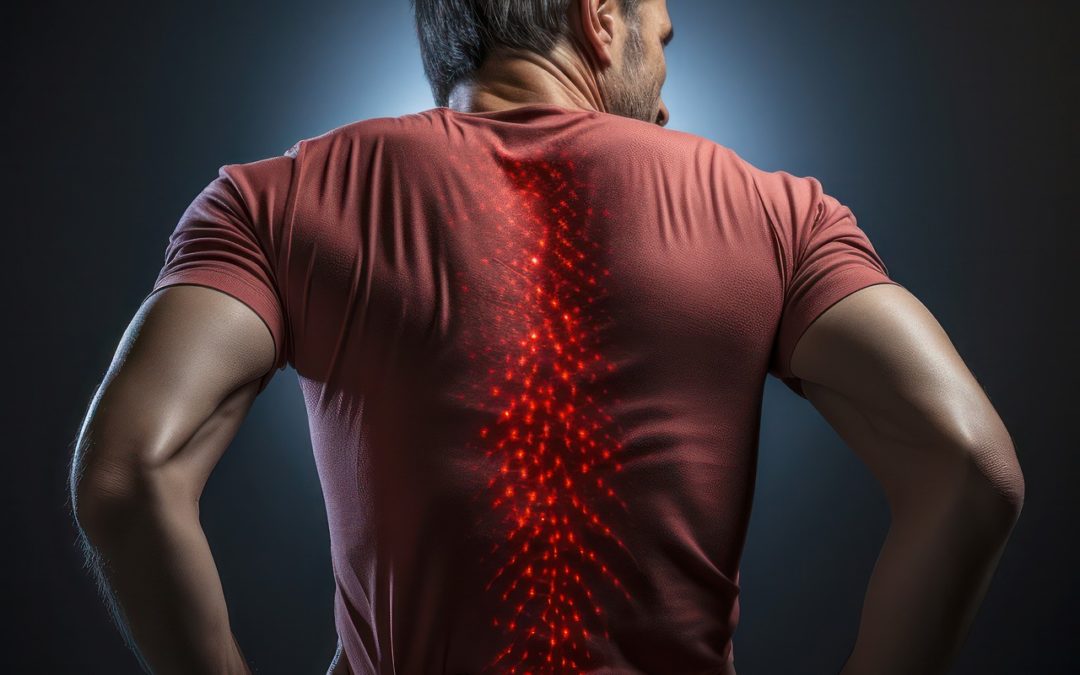Midback pain can be a debilitating condition that affects individuals of all ages. Chiropractic treatment offers a holistic approach to managing and alleviating midback pain, providing relief without the need for invasive procedures or medications. In this guide, we will explore the causes and symptoms of midback pain, delve into the principles of chiropractic care, and discuss the various treatment options available. Whether you are seeking relief from chronic midback pain or looking to prevent future discomfort, this guide will provide you with the essential information needed to make informed decisions about your health.
Understanding Midback Pain
The thoracic region of the spine, also known as the midback, is composed of twelve vertebrae that connect the cervical spine (neck) and the lumbar spine (lower back). The thoracic spine plays a crucial role in maintaining stability and protecting vital organs, such as the heart and lungs. However, this region is also susceptible to various conditions that can cause midback pain.
Common Causes of Midback Pain
- Mechanical Dysfunction: Mechanical dysfunction, also known as intersegmental joint dysfunction (ISJD), occurs when there is an alteration in joint alignment, motion, or physiological function within the thoracic spine. This dysfunction may result from trauma, overuse, or muscular imbalances.
- Reflexive Dysfunction: Reflexive dysfunction refers to altered joint mechanics that arise from sustained visceral nociceptive irritation. This irritation can trigger muscular guarding and lead to changes in joint mechanics. Psychological and emotional factors may also contribute to reflexive dysfunction.
- Postural Deficits: Poor posture, such as upper crossed syndrome, lower crossed syndrome, or paradoxical breathing, can contribute to midback pain. Imbalances in the muscles and connective tissues can place excessive stress on the thoracic spine, leading to discomfort.
- Viscerosomatic Referral: Viscerosomatic referral is a common source of thoracic complaints. It is essential for clinicians to perform a thorough review of systems, particularly cardiac, pulmonary, gastrointestinal, and renal, to identify any underlying visceral pathology that may be contributing to midback pain.
- Trauma and Fractures: Trauma, such as compression injuries or fractures, can cause severe midback pain. It is crucial to rule out any history of trauma when evaluating the source of midback pain.
Diagnosis and Evaluation
Accurate diagnosis and evaluation are essential for effective chiropractic treatment of midback pain. Chiropractors utilize a combination of physical examination, motion palpation, and imaging studies to assess the underlying causes of midback pain and develop an individualized treatment plan.
Clinical Evaluation
During a clinical evaluation, chiropractors will perform a thorough assessment of the patient’s medical history, focusing on any previous injuries or underlying conditions that may be contributing to midback pain. They will also conduct a physical examination, including palpation, range of motion testing, and neurological assessments, to identify any areas of dysfunction or abnormalities.
Motion Palpation
Motion palpation is a technique commonly used by chiropractors to assess joint mobility and identify areas of hypomobility or hypermobility within the thoracic spine. By applying gentle pressure and assessing the response, chiropractors can determine the presence of intersegmental joint dysfunction. Additionally, adjacent costovertebral joints should be assessed, as rib function is intimately connected to the movement of the thoracic spine.
Imaging Studies
While imaging studies are not always necessary for diagnosing midback pain, they may be utilized in cases where trauma, fractures, or other underlying pathology is suspected. X-rays can help identify vertebral compression fractures or congenital deficits, while advanced imaging such as MRI may be necessary for patients with severe neurologic compromise or suspected vertebral infection.
Chiropractic Treatment Options
Chiropractic treatment aims to restore joint mobility, alleviate pain, and improve overall spinal function. Chiropractors utilize a variety of techniques and modalities to address the underlying causes of midback pain and promote healing. The following treatment options are commonly used in chiropractic care:
1. Spinal Manipulation
Spinal manipulation, also known as chiropractic adjustment, is a primary treatment modality used by chiropractors to restore joint mobility and alleviate pain. During a spinal manipulation, the chiropractor applies controlled, sudden force to specific areas of the spine, targeting the intersegmental joint dysfunction. This technique can provide immediate relief and improve overall spinal function.
2. Soft Tissue Manipulation/Mobilization
Soft tissue manipulation and mobilization techniques are used to address muscular imbalances and alleviate tension within the muscles and connective tissues surrounding the thoracic spine. Chiropractors may employ techniques such as myofascial release, stretching, and massage to improve flexibility, reduce muscle hypertonicity, and promote healing.
3. Phase I Exercises
Phase I exercises are specific exercises tailored to the individual’s needs and condition. These exercises aim to improve postural deficits, strengthen the muscles supporting the thoracic spine, and enhance overall spinal stability. Chiropractors may prescribe exercises such as thoracic extension exercises, shoulder girdle strengthening, and core stabilization exercises to address the underlying causes of midback pain.
4. Postural Correction
Addressing postural deficits is crucial in managing midback pain. Chiropractors will assess the patient’s posture and identify any imbalances or abnormalities contributing to discomfort. Treatment may involve postural exercises, ergonomic modifications, and lifestyle recommendations to improve posture and prevent future midback pain.
5. Therapeutic Modalities
Therapeutic modalities, such as ice, heat, ultrasound, and electrical stimulation, may be utilized as adjunctive treatments to alleviate pain and reduce inflammation. These modalities can provide temporary relief and complement other chiropractic interventions.
6. Self-Mobilization Techniques
Chiropractors may teach patients self-mobilization techniques using foam rollers, balls, or other apparatus. These techniques allow individuals to perform gentle spinal mobilization exercises at home, promoting joint mobility and reducing discomfort between chiropractic visits.
7. Lifestyle Modifications
Lifestyle modifications play a crucial role in managing midback pain and preventing its recurrence. Chiropractors may provide guidance on ergonomics, proper lifting techniques, exercise routines, and stress management strategies to support overall spinal health.
The Benefits of Chiropractic Care for Midback Pain
Chiropractic care offers several advantages for individuals experiencing midback pain. Some of the key benefits include:
- Non-Invasive Approach: Chiropractic treatment provides a non-invasive alternative to medications and surgical procedures. By utilizing gentle spinal adjustments and other conservative techniques, chiropractors aim to alleviate pain and improve spinal function without the need for invasive interventions.
- Individualized Treatment: Chiropractors focus on developing individualized treatment plans based on the patient’s specific needs and goals. This personalized approach ensures that the underlying causes of midback pain are addressed, leading to more effective and long-lasting results.
- Holistic Approach: Chiropractic care takes a holistic approach to managing midback pain, considering the interconnectedness of the spine, muscles, and nervous system. By addressing the root causes of discomfort and promoting overall spinal health, chiropractors aim to improve the patient’s overall well-being.
- Drug-Free Pain Relief: Chiropractic care offers drug-free pain relief, reducing the reliance on medications that may have potential side effects. Through spinal adjustments, soft tissue manipulation, and other therapeutic modalities, chiropractors can alleviate pain naturally, allowing the body to heal and restore balance.
- Preventive Care: Chiropractic care focuses not only on treating existing midback pain but also on preventing its recurrence. By addressing postural deficits, providing lifestyle recommendations, and teaching self-mobilization techniques, chiropractors empower patients to take an active role in maintaining their spinal health.
Conclusion
Chiropractic care offers a safe, non-invasive, and holistic approach to managing midback pain. By addressing the underlying causes of discomfort, restoring joint mobility, and promoting overall spinal health, chiropractors can provide effective pain relief and improve the quality of life for individuals suffering from midback pain. If you are experiencing midback pain or looking to prevent its recurrence, consult with a qualified chiropractor to explore the benefits of chiropractic treatment tailored to your specific needs. Take control of your spinal health and experience the transformative effects of chiropractic care today.
-

Heal AC Joint Injuries Naturally
$60.00 -

Heal Bicep Tendinopathy Naturally
$60.00 -

Heal Plantar Fasciitis Naturally
$60.00 -
Sale!

RaquetFit Screen for Tennis Athletes
Original price was: $30.00.$0.00Current price is: $0.00. -
Sale!

Selective Functional Movement Assessment
Original price was: $30.00.$0.00Current price is: $0.00. -

The Master Student Book 1
$7.99 -

The Master Student Book 2
$7.99 -

The Rotator Cuff Healing Blueprint
$60.00

